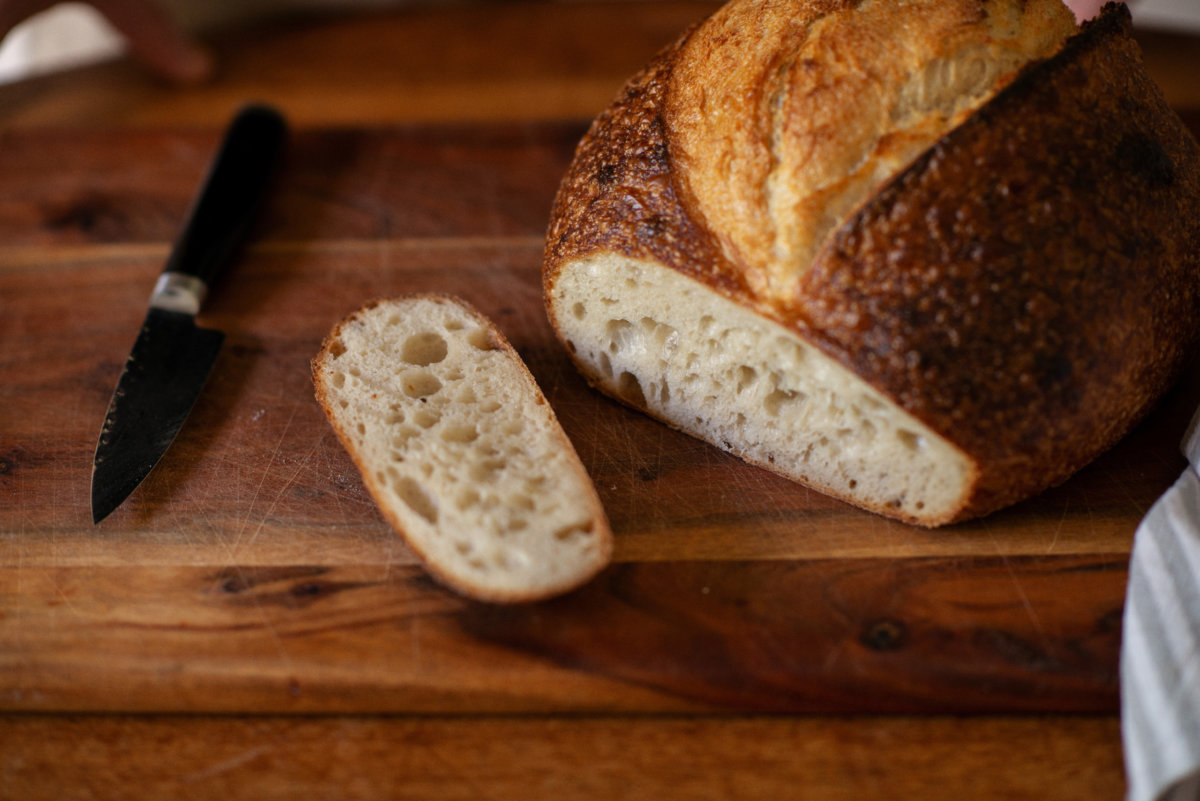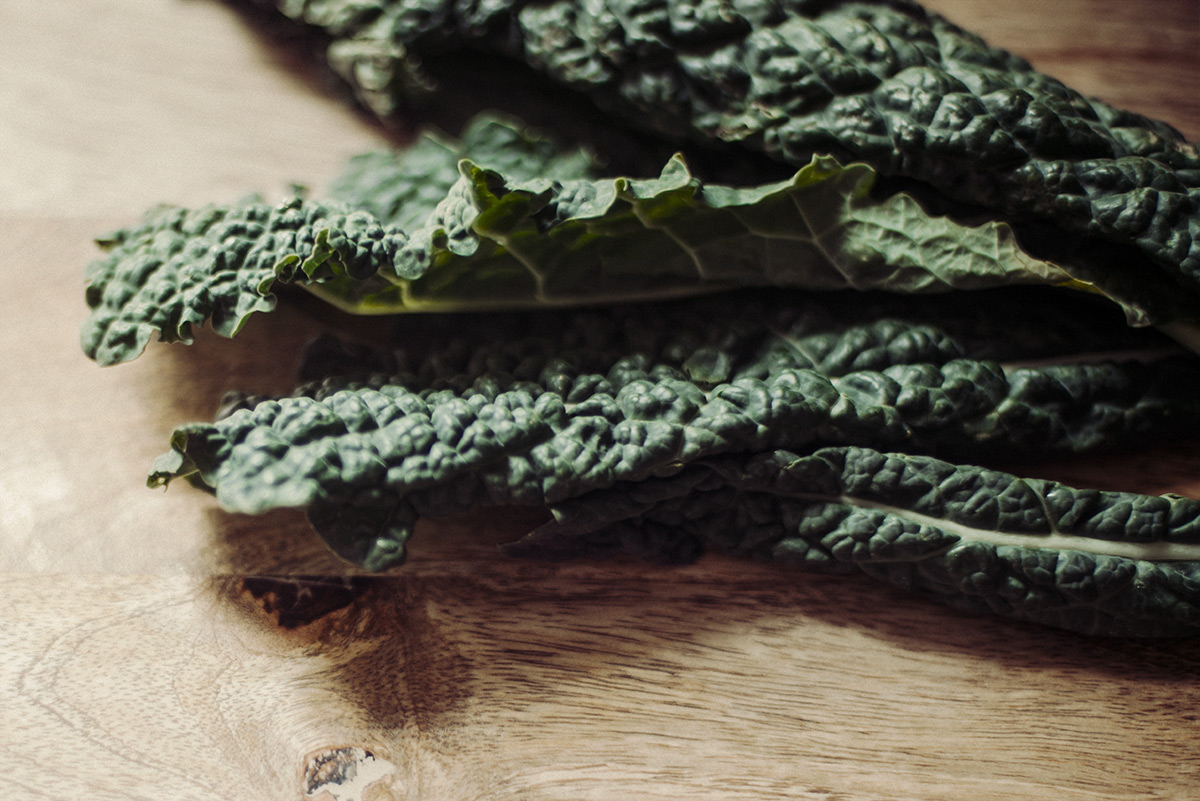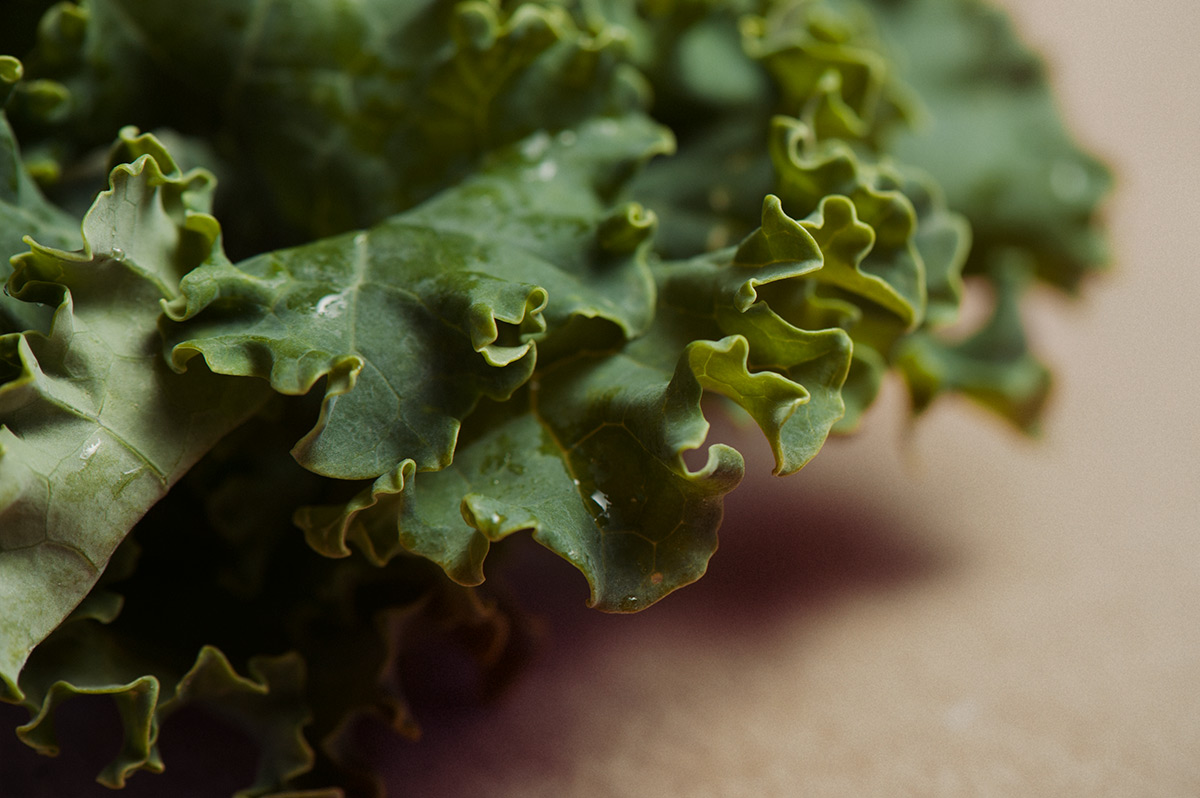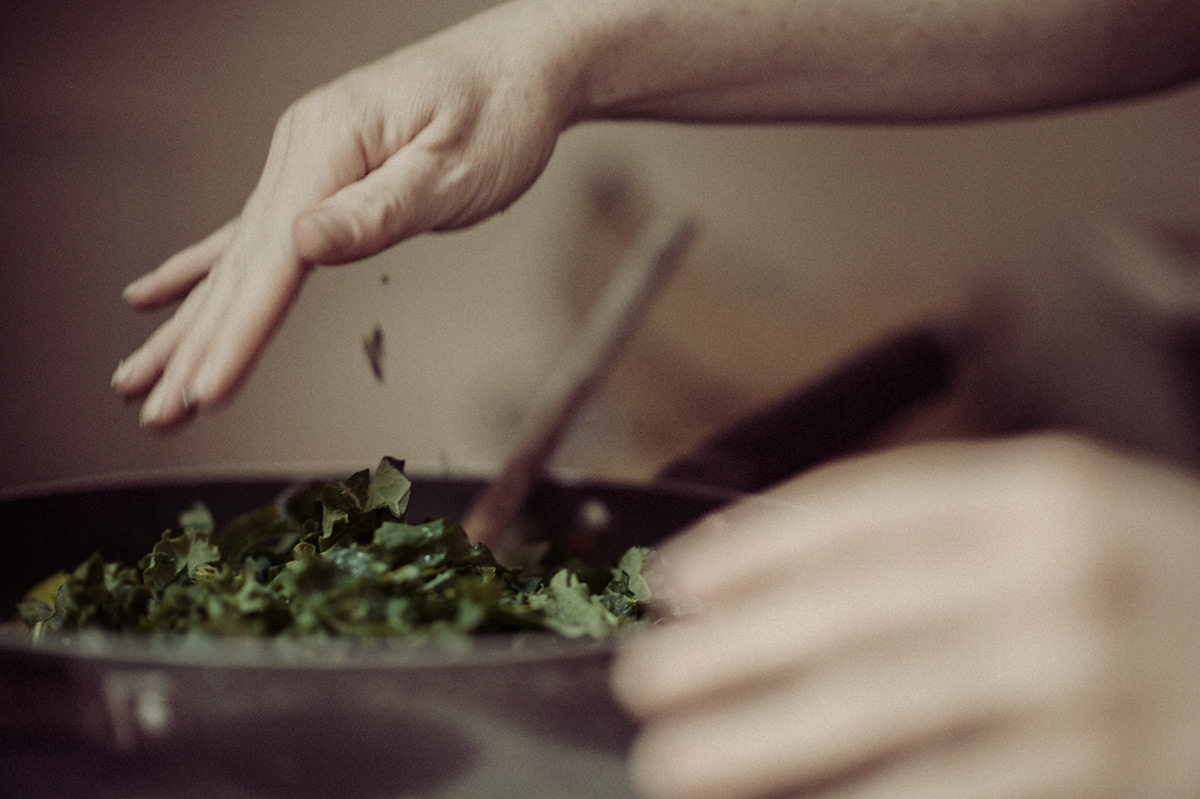
114—
Artisan Sourdough Bread

Unless the majority of your diet is good, going to the health food store once a week for a bag of Kale is not going to make an impact on your wellbeing. In some cases, if you are not consuming it properly, Kale could actually be bad for you. At the very least, it won’t be as good for you as you might have hoped!
I also work for Huckleberry Farms in Auckland (a Wholefoods Supermarket). At my job I get to see people who have become quite fanatical about coming into the store on ‘Kale Delivery Days’. God help us if we run out – it’s like telling them “sorry, we’ve just sold the last roll of toilet paper, you’re going to have to improvise”!
The people who rush in and rush out with their stash of Kale never ask us how they should consume this leafy green. Which is a shame, because if they did ask, this is what I’d tell them:
Kale is not the tastiest vege in the produce aisle, but when prepared correctly and eaten in moderation, it can be very good for you — and not half bad tasting!

Kale’s nutritional profile
Kale is nutrient dense. It boasts excellent levels of:
Carotenoids
Betacarotene, Lutein, and Zeaxanthin1
Vitamin C
one cup of Kale has as much Vitamin C as an orange
Calcium
per calorie, Kale has more Calcium than milk
Iron
per calorie, Kale has more Iron than meat2
Vitamin K3
Chlorophyll
Anticancer properties
Glucosinolates are the anti-cancer compounds found in Kale
Fibre
It also contains good levels of protein, omega 3 & 6 fatty acids, copper, manganese, sulphur and vitamins B1, B2, B6 & E.
This means that it’s good for your cardiovasular and lung health, your immune system, your bones… and well, it’s just very good for you in general!
However, that is assuming you consume it correctly.
(see the downside below).
Some things you may not have thought about when eating Kale:
If you have a thyroid issue, or even a suspected one (indicated by a slow or sluggish metabolism), it doesn’t pay to eat Kale raw in juices, smoothies, or salads. In this case, you should only ever eat it cooked.4
When eaten raw, it will add to the detrimental effects if you have a thyroid issue. It can also be harmful if you are iodine deficient (e.g. New Zealanders and Australians). Regardless of how it is prepared, it could promote a certain type of recurrent kidney stone issue.5 It could also lead to a food intolerance.
For more information on iodine deficiency – from me!
Not all of the health promoting properties of Kale (e.g. antioxidants & fat soluble vitamins), can be maximised if you don’t consume it with fat. Juices and Green Smoothies can be a problem here, and also some salads (depending on what’s in it, or on-top-of-it).

If you’re able to have raw Kale in your diet, it pays to use Cavolo Nero (a.k.a. Tuscan Kale), as it is considered to be slightly sweeter and is more delicate than Curly Kale (I personally find it more bitter — which I would expect to find with it being the darker green of the two varieties…). Curly Kale is tougher in texture and is better added to cooked dishes (as the leaves will wilt and break down).
To be honest, I can’t stand the taste of either type of Kale when raw. Whether it’s in a juice, a smoothie, or a salad! Gak! Kale is bitter, and I also don’t like the texture of it. Despite my best intentions (sadly), my Kale often get thrown out before I manage to psych myself up to eat it raw.
When I do have it, I either prepare it as a ‘side’ — I lightly steam it, and add a knob of organic butter and a drizzle of lemon (this cuts the bitter component).
Note: If I was being ‘good’ I would eat Kale without the lemon, and have it as a starter to promote good digestion!
Alternatively, I like to add Kale in at the very end, to my ‘one pot’ wonders!
Kale is just one of the items you should purchase from your local health food store (e.g. Huckleberry Farms or Harvest Wholefoods). Rotate your dark green leafies (Kale, Spinach, Swiss Chard/Silverbeet), and rotate your Cabbage Family everytime you shop.
Note: For freshness and variety I advise my clients to do small shops 2–3 times per week (more on this in a subsequent blog).
Aim to have a serving 2–3 times per week (between 1–2 cups, depending on your ideal body weight). Cut it up into 1/2 inch slices and cut again crosswise, lightly steam, and add 3–5g of fat (butter, olive oil or coconut fat). Make sure you chew it well! This ensures you benefit from the full array of nutrients this vegetable provides, as well as the fibre.
To add Kale to your diet, you could lightly sauté it with fresh garlic (and sprinkle with lemon juice before serving), or add it to a home cooked pizza.
Here’s a recipe from loveandlemons.com
Kale walnut pesto
And another from acouplecooks.com
Kale and artichoke frittata
These recipes all follow Lisa’s ‘Keep It Simple Sweetie’ (K.I.S.S) guide to eating!
Click here to read more.
Lisa Fitzgibbon is a degree qualified (2006), experienced and registered Naturopath & Medical Herbalist. She runs her own private practice – OOMPH in Grey Lynn, Auckland, New Zealand.
Lisa has been involved in the Natural Health industry for 16 years. She draws on her professional training and experience, as well as her own personal experience to bring you realistic, holistic health advice.
Book onlineCarotenoids (antioxidants) are best absorbed with fat in a meal. Chopping, puréeing, cooking and chewing carotenoid containing vegetables in oil generally increases the bioavailability of the carotenoids they contain.
Heme iron from animal sources is much better absorbed than non-heme iron from non-meat sources.
Vitamin K can interact with some medications (e.g blood thinners). Please ensure you discuss potential interactions with your doctor if you are considering incorporating Kale into your diet on a regular basis.
Kale is a member of the Cabbage family (a.k.a. Mustard, Brassica, and Cruciferous): Cabbage, Bok Choy, Broccoli, Brussel Sprouts, Cauliflower, Kale, Radish, Turnip, and Watercress. The Cabbage family have a goitrogenic effect. They contain naturally-occurring substances that can interfere with the functioning of the thyroid gland. Cooking deactivates these compounds. Glucosinolates are the anti-cancer compounds found in the Cabbage family.
Kale is high in oxalic acid. Therefore it is to be avoided if you have recurrent calcium oxalate kidney stones
Subscribe to LISA SAID SO
Subscribe to the LSS newsletter to get updates on a very irregular basis.
Sorry for the interruption!
You seem to be interested in what Lisa has to say. To be updated when new articles are published, or we have news to share, enter your email below. Thanks!